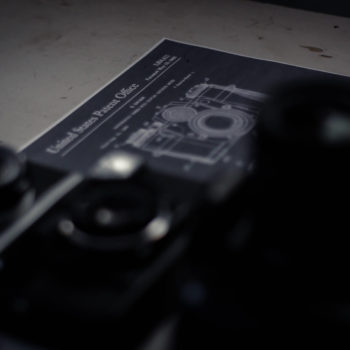 When you have spent countless hours thinking about a product idea and invested in its development, you certainly want to protect your invention from theft and copycats. With our increasingly connected world, intellectual property theft has never been easier. Today, information is more accessible than ever, which means that safeguarding your startup’s IP is vital to its success.
When you have spent countless hours thinking about a product idea and invested in its development, you certainly want to protect your invention from theft and copycats. With our increasingly connected world, intellectual property theft has never been easier. Today, information is more accessible than ever, which means that safeguarding your startup’s IP is vital to its success.
Below are five ways to safeguard your intellectual property and protect your invention from theft.
Provisional Patent
The idea behind using a provisional patent is that you want to secure your position as the ‘first to file’ while you complete the filing of the nonprovisional patent. It also allows you to use the highly regarded ‘patent pending’ phrase on all documentation and marketing materials.
Provisional patents are legal documents filed with the USPTO to establish an early filing date of an invention. In order for its provisions to extend beyond the 12 months of the provisional patent, you must file for a nonprovisional patent. This 12-month period can’t be extended, so if you miss filing the nonprovisional patent in the designated timeframe, you’ll no longer have any patent protection for your invention. (Forbes Advisor)
Most often, the ‘patent pending’ phrase will deter infringers because they will see that you are serious in protecting your legal rights.
Design and Utility Patents
Design and utility patents are two legally enforceable protections that help assure that any theft of your invention is punishable by law. An IP attorney will be able to help you craft a solid patent strategy to avoid any workarounds or loopholes from potential copycats.
A design patent focuses on the exterior design, features and overall aesthetics of the product. Design patents extend to what is exactly shown in the line drawings, nothing more. For this reason, some products may require multiple design patents. Each design patent would cover a specific physical feature of the product.
Having high-quality professional line drawings by a CAD designer is extremely advantageous. With a design patent, you are able to use the coveted phrases, ‘patent pending’ and ‘patent issued’ on all marketing material and have confidence that your invention is protected for the next fourteen years. There is also speed with design patents that utility patents lack. It can take a mere six to nine months to obtain a design patent, while utility patents can take a year or more.
Utility patents, commonly referred to as ‘patents for invention’, are the patents that first come to mind when thinking about IP protections. Utility patents focus solely on the inner workings of your invention, its unique functions and overall usefulness. While a utility patent is harder to get than a design patent, it offers better coverage because of the protections built into the patent system.
According to the United States Patent and Trademark Office, 90% of the patent documents issued by the USPTO in recent years have been utility patents.
Non-Disclosure Agreements
Non-Disclosure agreements (NDA) are legally binding documents that are especially useful if your invention has yet to be patented. Using an NDA will give you peace of mind that that you can share information about your invention with a third-party without the fear of theft.
Startups at any stage will have proprietary information and trade secrets that you do not want leaked. To keep this information secure, non-disclosure agreements need to be signed by employees and any third-party contractors. An attorney will be able to help you draw up an NDA to protect your startup from information leaks and your product from theft.
Establish a Confidential Relationship
If for any reason a patent and NDA are not able to be used, another option is that of a confidential relationship. Keep in mind that this is much harder to legally enforce since it is ‘implied’.
A confidential relationship is said to be present if four conditions are met before and during your relationship:
- The customer solicited the idea from you.
- You make it clear that the invention is a business proposition and that you desire payment for goods and services.
- You ask for the information to be kept secret at the time of disclosure.
- You make it clear that the invention is a trade secret because of its value, and that it is unknown to competing businesses.
Disclose ‘Around’ the Trade Secret
The key with disclosing ‘around’ your invention is to keep things vague. Potential investors and customers will want to know what your invention accomplishes and how it can be profitable. If you do not have a signed NDA or patent protections, keep any information directly related to your trade secrets/proprietary information vague. If a partner or potential customer is interested in this basic information about your product, have them sign an NDA before diving any deeper into the details.
Protect your invention early-on to safeguard your product and any future opportunities for it that could arise. We highly recommend working with an experienced Intellectual Property Attorney to find the best IP strategy for your startup today and as it grows.
______
Developing Ideas From Concept To Product®
3D Innovations is a Product Development Company – from the 3D Design to a fully functional 3D Prototype & Product.

